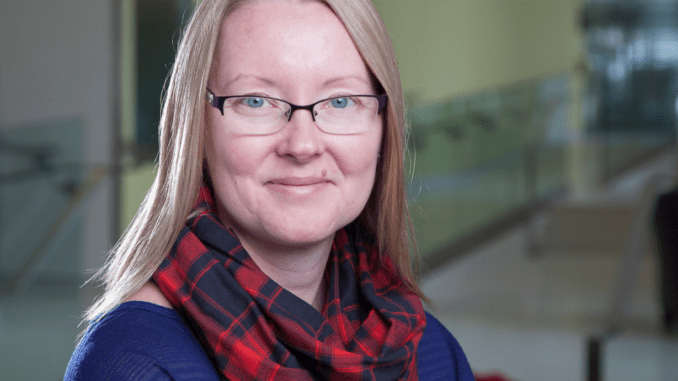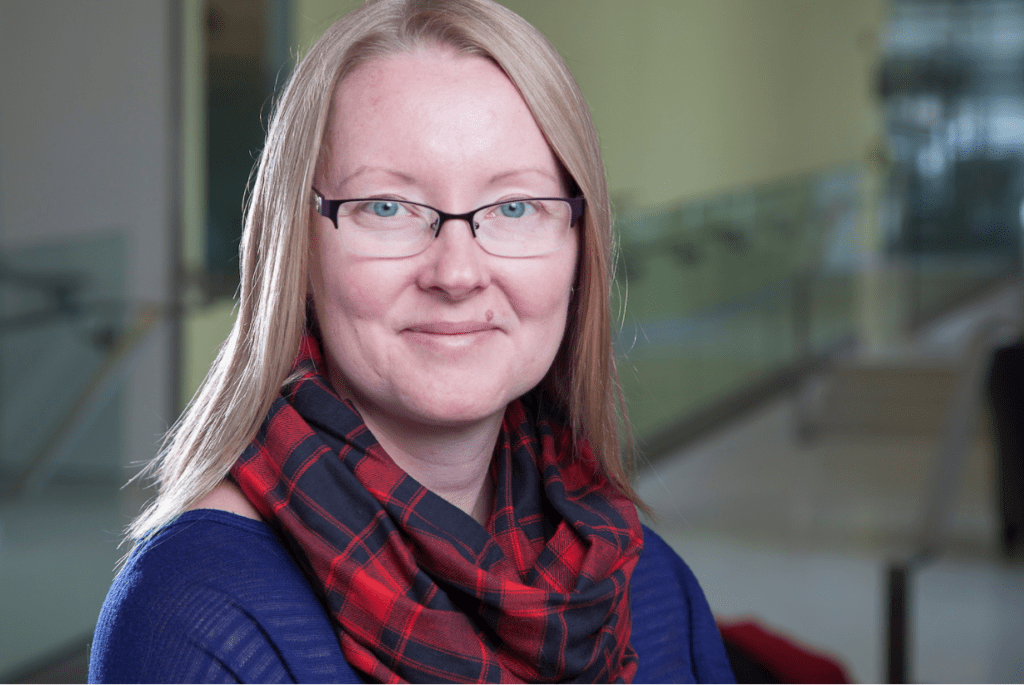

By Lacey Cranston
Managing Editor, Journal of Military, Veteran and Family Health
Canadian Institute for Military and Veteran Health Research
“I didn’t earn it, not the way you’re supposed to,” he said. “I didn’t go to war. I’ve never deployed to Afghanistan.”
It had been four months since my husband was diagnosed with post-traumatic stress disorder (PTSD), although he’d been suffering from its debilitating effects for years. Watching the disease slowly, but surely, drain the life from the once confident and outgoing person I love was excruciating for me and humiliating for him.
Being able to name the dark cloud constantly hanging over my husband’s head was a double-edged sword; on one hand, he had a diagnosis. On the other, it was difficult for him to accept.
I met my husband at university. He was the guy in class who had an answer for every question and an opinion on every subject. He grew up eating, breathing and sleeping all things military. He had one goal in life: to become an air force pilot. The day he realized that dream was the happiest of his life, next to the birth of our son.
So, when he started waking up in a cold sweat from relentless nightmares, losing his temper over the smallest things, drinking too much, not sleeping enough and disengaging from the world around him, he couldn’t accept something was wrong. Wouldn’t. Air force pilots were Gods among men. They didn’t break down. They were invincible.
“I used to slay dragons,” he once told me. “Now, here I am, cowering in the shadows. What is wrong with me?”
My husband’s PTSD developed atypically. It wasn’t due to a single catastrophic event or as a result of combat during his 15 years as a military pilot. It built up slowly while mentoring the next generation of aviators as an instructor. Constant feelings of stress, danger, fear, hopelessness and betrayal took their toll. His symptoms lay dormant for over a year before exploding into our lives.
It took a lot of research on my part, and a lot of coaxing, to get my husband to confide in a doctor about what he was feeling. It took more research, more coaxing and a lot of tears before he agreed to see a mental health professional. Once he had a PTSD diagnosis, the real work began. He fit the profile but didn’t feel worthy of the diagnosis.
“I don’t deserve it,” he kept saying. “So many people have it way worse than me.” As if that mattered to PTSD. As if PTSD kept score.
In an effort to help him understand his condition, I joined online and in-person PTSD spousal and family support groups. I spent hours on MEDLINE and PubMED, reading medical journals, searching for anything to help him process his diagnosis. I was at a loss until I found the one article that changed everything.
“Posttraumatic Stress Disorder in Adults: Impact, Comorbidity, Risk Factors, and Treatment,” by Dr. Jitender Sareen was the first paper I read to state PTSD can be brought on by “an accumulation of multiple exposures to various traumatic events” and that symptoms sometimes don’t manifest until months, or years, later. It was the first time I recognized my husband — his struggle, his illness trajectory — in a scientific article.
I shoved it under his nose.
“That’s me,” my husband said, reading Sareen’s paper. His expression was like sunshine after months of perpetual darkness. The validation and relief were palpable. Someone recognized him. Someone cared. Someone wanted to make his life better; our lives better.
“I can’t believe there’s a researcher out there studying my kind of PTSD.”
One article was all it took for my husband’s entire outlook to change. He went to therapy with a different attitude and believed the process would work for him because he had PTSD. He was kinder to himself on days he was forgetful or massively disorganized because he had PTSD. He was mindful of his temper with family and friends because he had PTSD. He was now “tired” and not “lazy” when he napped in the afternoon after a poor night’s sleep because he had PTSD.
After watching the transformation in my husband, I shared Sareen’s article among my support groups in the hopes it would help others the same way it helped us. I sent it to family and friends when they wanted to know what happened to my husband, how, and why. I keep sharing it because it’s still the most valuable piece of information we’ve encountered on our PTSD journey.
There is a significant amount of research about military members, Veterans and their families that is communicated in this manner. Rarely are the researchers who publish the articles, project funders, or policy makers aware of this, as it’s unseen and not easily tracked. However, it’s likely one of the most valuable sources of knowledge mobilization available.
This form of communication allows information to be shared beyond peer support networks and into an individual’s own circle of care. This is a key, as information is no longer siloed within the military health community, but shared with primary care providers, where patient trust is often high and treatment most frequent.
It also helps people like my husband break down the barriers of shame, guilt, hopelessness and despair that often accompany a diagnosis of PTSD. It’s let him slowly start to reclaim pieces of himself — a little confidence here, a little poise there.
He didn’t go to war. He never deployed to Afghanistan. But he has PTSD.
